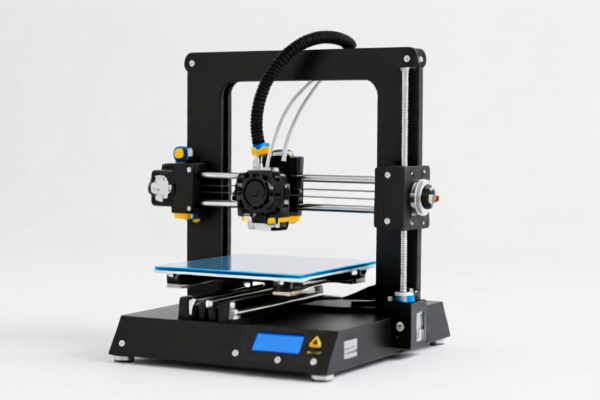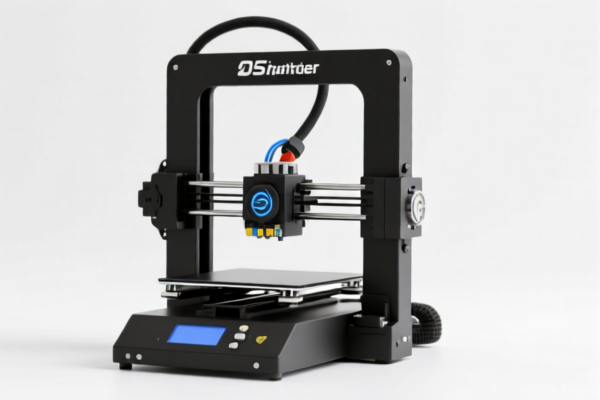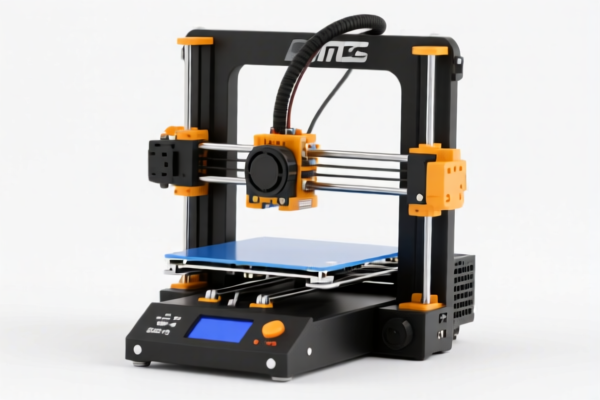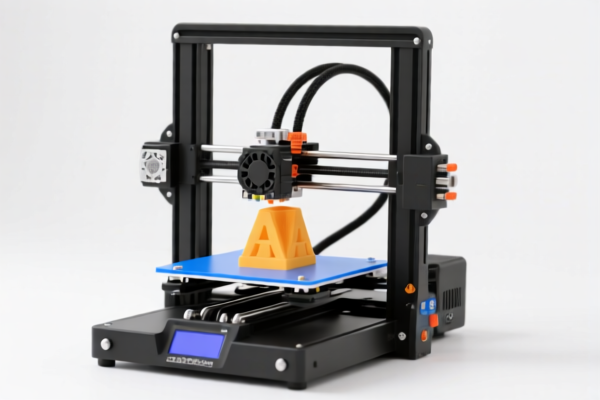| HS Code | Official Doc | Tariff Rate | Origin | Destination | Effective Date |
|---|---|---|---|---|---|
| 3816001000 | Doc | 55.0% | CN | US | 2025-05-12 |
| 3816002050 | Doc | 58.0% | CN | US | 2025-05-12 |
| 3801900000 | Doc | 59.9% | CN | US | 2025-05-12 |
| 3801101000 | Doc | 58.7% | CN | US | 2025-05-12 |
| 3901905501 | Doc | 61.5% | CN | US | 2025-05-12 |
| 3901909000 | Doc | 61.5% | CN | US | 2025-05-12 |
| 3914006000 | Doc | 58.9% | CN | US | 2025-05-12 |
| 8304000000 | Doc | 33.9% | CN | US | 2025-05-12 |
| 8304000000 | Doc | 33.9% | CN | US | 2025-05-12 |
| 8310000000 | Doc | 55.0% | CN | US | 2025-05-12 |
| 4823901000 | Doc | 55.0% | CN | US | 2025-05-12 |
| 4823907000 | Doc | 55.0% | CN | US | 2025-05-12 |
| 4820900000 | Doc | 55.0% | CN | US | 2025-05-12 |




3D Printing Supplies
3D printing supplies encompass a wide range of materials and related components used in the additive manufacturing process. These supplies are critical for creating three-dimensional objects from digital designs.
Materials
The core of 3D printing lies in the materials used. These are typically categorized by the printing technology they support.
- Filaments: Primarily used in Fused Deposition Modeling (FDM) printers. Common types include:
- PLA (Polylactic Acid): A biodegradable thermoplastic derived from renewable resources like cornstarch. Known for its ease of use, low warping, and affordability. Suitable for prototyping, educational purposes, and non-functional parts.
- ABS (Acrylonitrile Butadiene Styrene): A petroleum-based thermoplastic offering greater strength, durability, and heat resistance than PLA. Often used for functional parts, housings, and parts requiring higher impact resistance. Requires a heated bed and enclosed printer to mitigate warping.
- PETG (Polyethylene Terephthalate Glycol-modified): A glycol-modified version of PET, combining the ease of printing of PLA with the strength and durability of ABS. Offers good chemical resistance and is often used for food containers and mechanical parts.
- TPU (Thermoplastic Polyurethane): A flexible filament used for creating rubber-like parts, seals, and flexible prototypes. Requires specific printer configurations due to its elasticity.
- Nylon: A strong, durable, and heat-resistant filament suitable for functional parts, gears, and high-stress applications. Requires high printing temperatures and a dry environment.
- Polycarbonate (PC): Extremely strong and heat-resistant, used for demanding applications requiring high impact resistance and durability. Requires high printing temperatures and a specialized printer setup.
- Composite Filaments: Filaments infused with other materials (carbon fiber, wood, metal particles) to enhance specific properties like strength, conductivity, or aesthetics.
- Resins: Used in Stereolithography (SLA), Digital Light Processing (DLP), and Masked Stereolithography (MSLA) printers. These are liquid photopolymers that harden when exposed to UV light.
- Standard Resin: General-purpose resins suitable for prototyping and detailed models.
- Tough Resin: Designed for parts requiring higher impact resistance and durability.
- Flexible Resin: Creates rubber-like parts with varying degrees of flexibility.
- Castable Resin: Used for creating molds for metal casting.
- Dental Resin: Specialized resins for dental applications like aligners and models.
- Powders: Used in Selective Laser Sintering (SLS), Selective Laser Melting (SLM), and Multi Jet Fusion (MJF) printers.
- Nylon Powders: Commonly used in SLS for creating functional parts with good mechanical properties.
- Metal Powders: Used in SLM and MJF for creating high-strength metal parts. (Stainless Steel, Aluminum, Titanium, etc.)
- Other Materials: Less common but emerging materials include pastes (for ceramic printing) and sheet materials (for laminated object manufacturing).
Supporting Components & Accessories
Beyond the primary material, several components are essential for successful 3D printing:
- Build Plates: The surface on which the 3D object is printed. Materials vary (glass, aluminum, PEI) and often require adhesives for optimal adhesion.
- Adhesives: Used to improve adhesion between the build plate and the printed object. (Glue sticks, hairspray, specialized build plate coatings)
- Nozzles: The component through which filament is extruded in FDM printers. Available in various sizes and materials (brass, hardened steel).
- UV Curing Stations: Used to fully cure resin prints after they are removed from the printer.
- Post-Processing Tools: Tools used to refine the finished print (sandpaper, files, polishing compounds, paints).
- Cleaning Agents: Used to remove excess resin or support material. (Isopropyl alcohol, specialized resin cleaners)
Usage Scenarios
3D printing supplies are used in a wide variety of applications:
- Prototyping: Rapidly creating physical models to test designs.
- Manufacturing: Creating custom parts, tooling, and end-use products.
- Education: Teaching design, engineering, and manufacturing principles.
- Healthcare: Creating custom prosthetics, implants, and surgical guides.
- Hobbyist & DIY Projects: Creating custom designs for personal use.
Common Types (by Technology)
| Technology | Material | Common Applications |
|---|---|---|
| FDM | PLA, ABS, PETG, TPU, Nylon, Polycarbonate | Prototyping, functional parts, hobbyist projects, tooling |
| SLA/DLP/MSLA | Standard Resin, Tough Resin, Flexible Resin, Castable Resin | Detailed models, jewelry, dental applications, prototyping |
| SLS | Nylon Powder | Functional parts, complex geometries, durable prototypes |
| SLM/MJF | Metal Powder (Stainless Steel, Aluminum, Titanium) | High-strength parts, aerospace components, medical implants |
| --- | ||
| Based on the provided information, classifying "3D printing supplies" requires careful consideration of the material composition of those supplies. Here's a breakdown of potentially relevant HS codes: |
- 3901905501: Polymers of ethylene, in primary forms; Other; Other; Ethylene copolymers. This code applies to ethylene copolymers, which are frequently used in 3D printing filaments. The tax rate details are: Basic tariff: 6.5%, Additional tariff: 25.0%, Additional tariff after 2025.4.2: 30.0%, Total tariff: 61.5%.
- 3901909000: Polymers of ethylene, in primary forms; Other; Other; Other. This is a broader category for other polymers of ethylene, also potentially applicable to 3D printing materials. The tax rate details are: Basic tariff: 6.5%, Additional tariff: 25.0%, Additional tariff after 2025.4.2: 30.0%, Total tariff: 61.5%.
- 4823901000: Other paper, paperboard, cellulose wadding and webs of cellulose fibers, cut to size or shape; other articles of paper pulp, paper, paperboard, cellulose wadding or webs of cellulose fibers; Other; Of paper pulp. If the 3D printing supplies include paper-based materials, this code may be relevant. The tax rate details are: Basic tariff: 0.0%, Additional tariff: 25.0%, Additional tariff after 2025.4.2: 30.0%, Total tariff: 55.0%.
- 4823907000: Other paper, paperboard, cellulose wadding and webs of cellulose fibers, cut to size or shape; other articles of paper pulp, paper, paperboard, cellulose wadding or webs of cellulose fibers; Other; Other; Other; Of cellulose wadding. This code applies to cellulose wadding materials used in 3D printing. The tax rate details are: Basic tariff: 0.0%, Additional tariff: 25.0%, Additional tariff after 2025.4.2: 30.0%, Total tariff: 55.0%.
Explanation of HS Code Structure (based on provided reference):
- Chapter 39: Covers polymers of ethylene, in primary forms.
- Heading 3901: Specifically refers to polymers of ethylene.
- Subheading 3901.90: Indicates "Other" forms of ethylene polymers.
- Subheading 3901.90.55: Further specifies ethylene copolymers.
- Subheading 3901.90.90: Represents other ethylene polymers not specifically classified elsewhere.
- Chapter 48: Covers paper, paperboard, cellulose wadding, and related articles.
- Heading 4823: Specifically refers to other paper, paperboard, cellulose wadding, etc., cut to size or shape.
- Subheading 4823.90: Indicates "Other" articles within this category.
- Subheading 4823.90.10: Specifies articles of paper pulp.
- Subheading 4823.90.70: Represents other articles not specifically classified elsewhere, made of cellulose wadding.
Important Note: The correct HS code depends on the specific material of the 3D printing supplies. If the supplies are made of materials not listed above, a different HS code may be required.
Customer Reviews
The table with HS codes and tariff rates made it easy to find the right classification for my 3D printing materials. The 8304000000 code with a 33.9% rate was a big help.
I found the HS code 4823901000 for paper-based 3D printing supplies. The 55.0% tariff rate and detailed explanation were very useful for my export planning.
The page helped me understand the differences between FDM and SLA materials. I found the HS code for my nylon-based 3D printing supplies under 3901905501.
The information on paper-based 3D printing supplies was a bit unclear. I was looking for a more straightforward way to find HS codes for cellulose wadding.
I was exporting 3D printing resins and needed the right HS code. The 3901909000 entry with a 61.5% tariff rate was exactly what I was looking for.